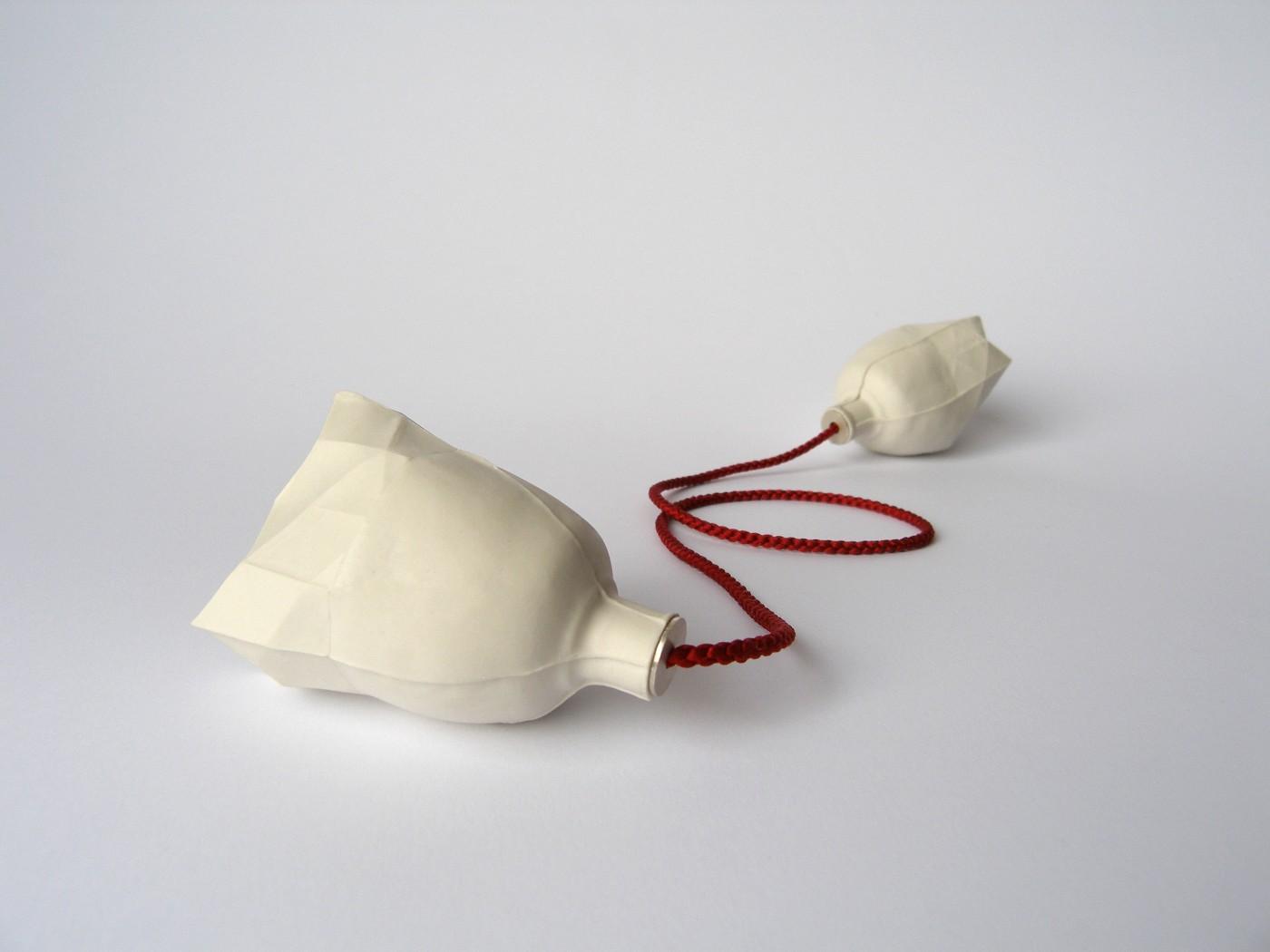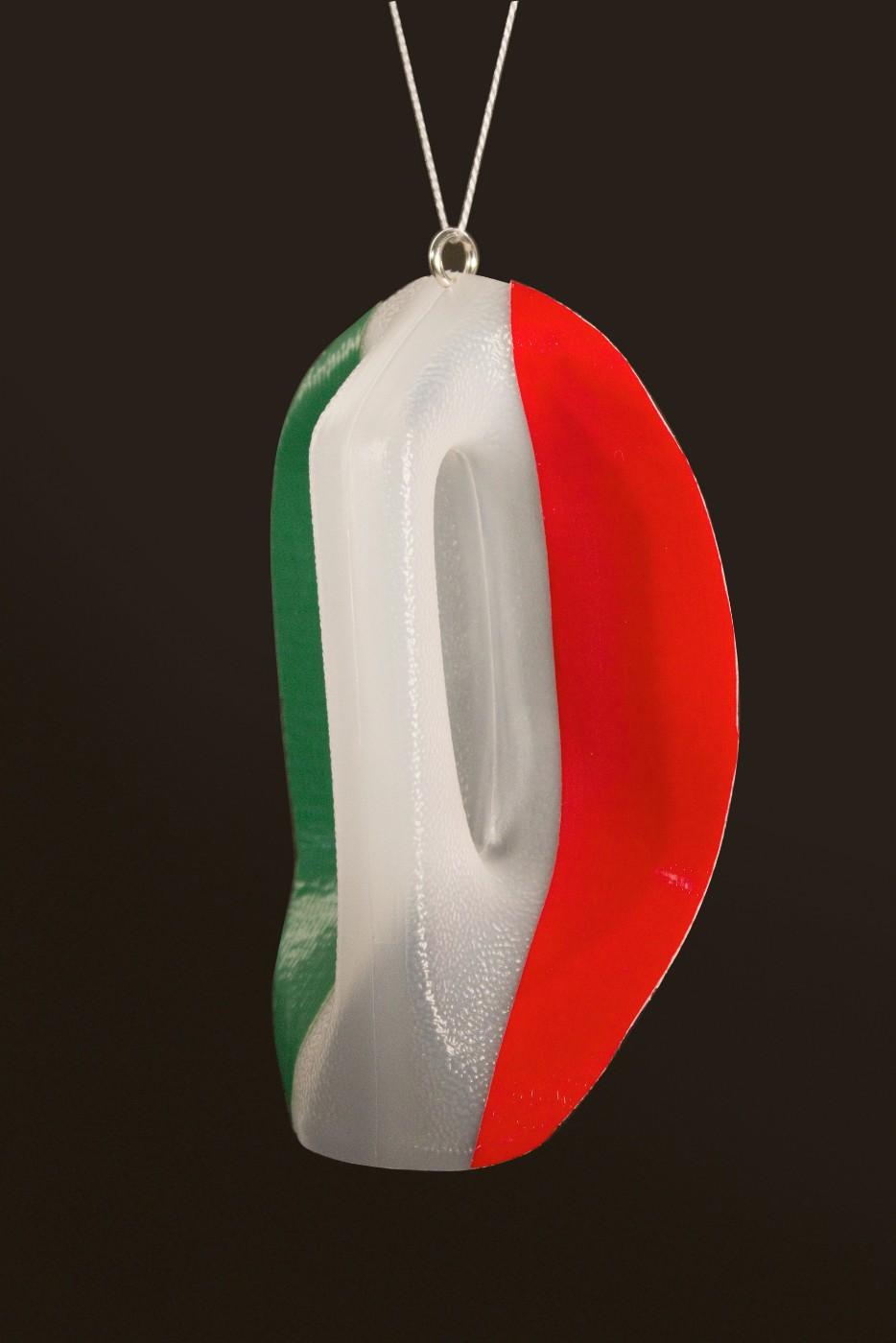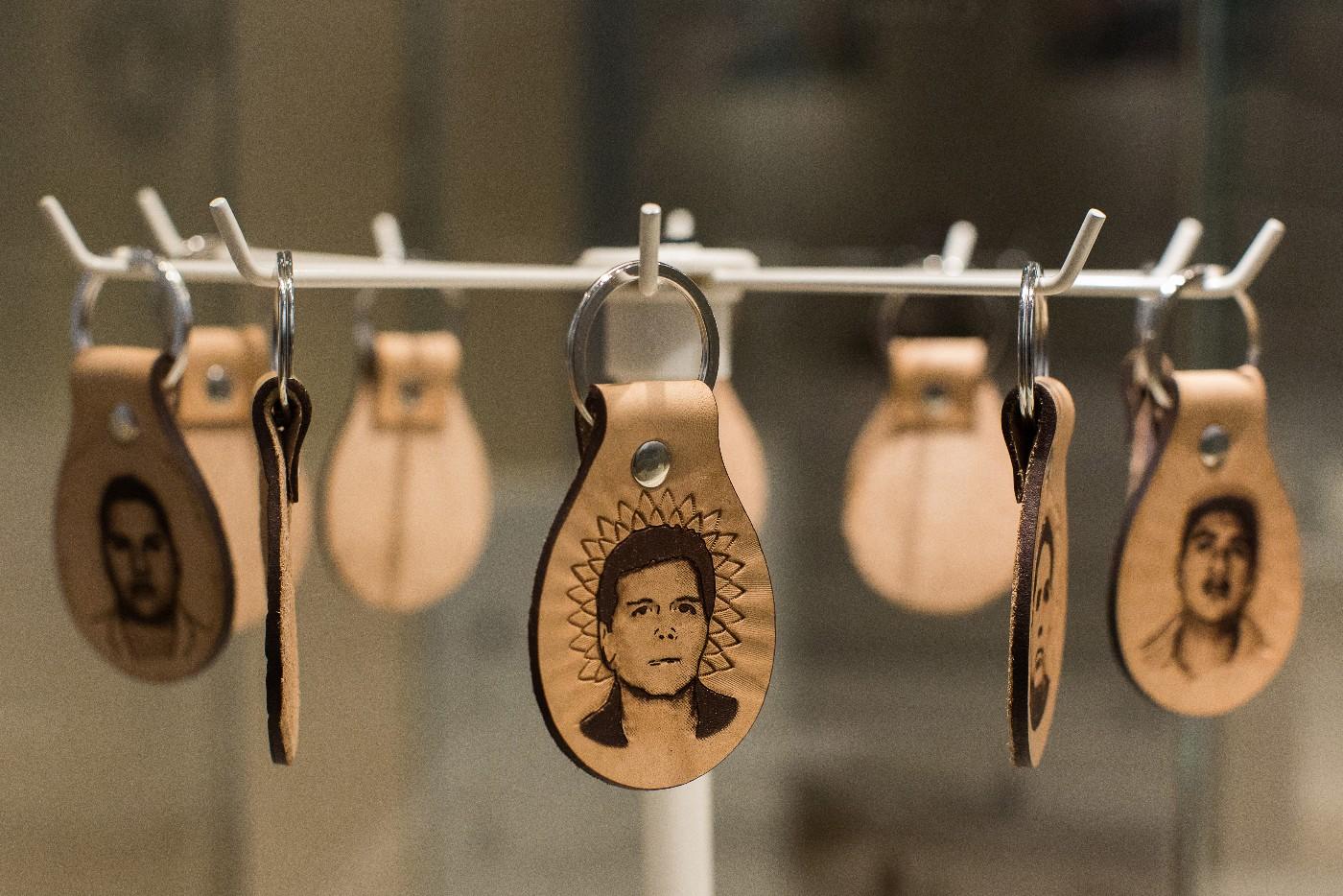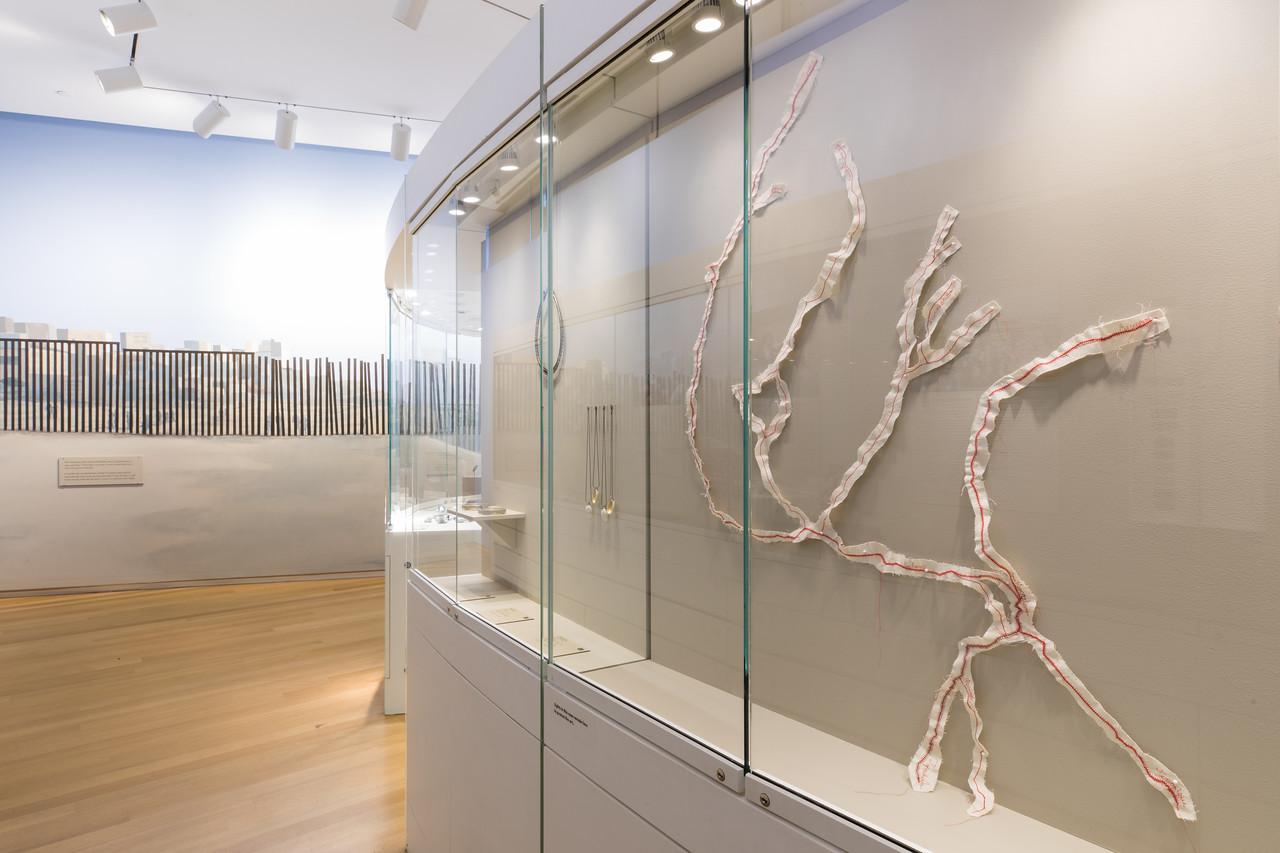Aline Berdichevsky’s Lightvessels 2 and Kevin Hughes’ Untitled necklace, which is made from the handle of a plastic water jug, highlight a practical need along the border: the necessity of water. Border crossers must carry their own water through the desert or risk death. In Lightvessels 2, a delicate hand jewel in porcelain, Berdichevsky honors the women who serve as lifelines to immigrants, waiting along cargo train tracks to throw life-saving water to stowaways. Kevin Hughes’ repurposing of an empty water jug into a Mexican flag and necklace transforms the physical burdens of crossings and carrying water into a badge of honor. Presented here as a large pendant, it is to be worn with pride, commemorating both homeplace and having completed the difficult journey.

Installation view of La Frontera: Encounters Along the Border at the Museum of Arts and Design.
Beginning this month, the Museum of Arts and Design in New York presents a dialogue about immigration in a new format. La Frontera: Encounters Along the Border uses contemporary jewelry to engage new narratives surrounding immigration and life along the US-Mexico border. The fourth stop for this exhibition, including one in Mexico, La Frontera brings together 48 artists from around the world working in a range of media. These intimate objects of adornment personalize a larger dialogue that can often be dehumanizing.
“La Frontera testifies to the power of intimate personal objects within the epic human and natural dramas that unfold daily along the US–Mexico border,” said MAD Assistant Curator Barbara Paris Gifford. “At a time when the personal has become lost in the politics, this exhibition reminds us of our shared humanity, and points to the absurdity of constructing artificial divisions.”
Exploring what 'borders' mean to us practically and metaphorically, these artists expose a complex, more human side to the border, and a more nuanced view than the one that dominates our news cycle.

Aline Berdichevsky (Spain), Lightvessels 2 Hand jewel, 2013. Slip cast porcelain, Limoges porcelain, sterling silver, silk, 4.8 x 4.5 x 7 cm.

Kevin Hughes (United States), Untitled Necklace, 2013. Plastic from water jug, duct tape, silver, 10.1 x 15.2 x 4.4 cm.
Kerianne Quick’s Fugitives from her Greetings from Mexico, or Souvenirs from the Border series, turns portraits of immigrants into mugshot tchotchkes. For immigrants these objects could be a reminder of the sacrifice they’re making: taking on the insecurity of not having legal documentation in exchange for a better life. Fugitives also plays on the fact that media coverage and the political dialogue surrounding the border has for many Americans reduced this region to being synonymous with ‘illiegals’, ignoring the humanity of this region, its cultures and peoples. Fugitives is a physical token of this oversimplification.

Kerianne Quick, Fugitives from the Greetings from Mexico, or Souvenirs from the Border series, 2017. Steel, leather.

Installation view of Raquel Bessudo's LaBestia, 2013. Canvas, polyester thread.
Among the works representing the physicality of the region are Raquel Bessudo’s necklace La Bestia, and Demitra Thomloudis’ brooch Reconstructed: Framed. La Bestia is a deconstructed map of the cargo train routes that immigrants stowaway on to cross the border. Draping across the body in canvas and polyester thread, the delicacy of the necklace and the way it entangles the body evokes the perilousness of this trip. Demitra Thomloudis similarly reduces a larger concept to its basic elements. Reconstructed: Framed breaks down a border wall to its physical elements: cement and steel. Materials that in this context could symbolize strength and division, are instead reassembled as a beautiful object of adornment.

Demitra Thomloudis (United States), Reconstructed: Framed, Brooch, 2012. Cement, sterling silver, resin, steel, pigment, thread, duct tape. 8.9 x 6.4 x 4.4 cm.
La Frontera: Encounters Along the Border is at the Museum of Arts and Design, 2 Columbus Circle, New York, through September 23. For more information visit http://madmuseum.org/exhibition/la-frontera






















![DEl Kathryn Barton [Australian b. 1972] the more than human love , 2025 Acrylic on French linen 78 3/4 x 137 3/4 inches 200 x 350 cm Framed dimensions: 79 7/8 x 139 inches 203 x 353 cm](/sites/default/files/styles/image_5_column/public/ab15211bartonthe-more-human-lovelg.jpg?itok=wW_Qrve3)



